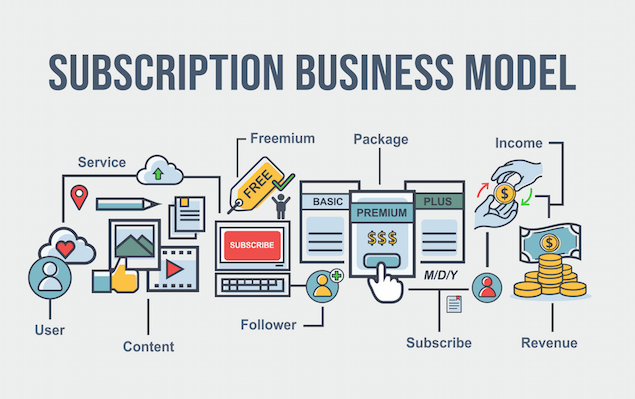Are your stakeholders looking for better results? Are you an owner of a small business struggling to grow?
Then it may be time to look for new revenue streams for your business.
Improving revenue is all about increasing income for your business while decreasing expenses. To do so you need to take a step back and look at your business and see how you can use your current resources and skills to open new revenue streams.
So how do you get started? Keep reading for tips on discovering multiple revenue streams for your business.
Importance of Multiple Revenue Streams
Most of us have been through at least one if not more economic crises, the Covid-19 recession being the latest. Many brick-and-mortar businesses had to close stores for a bit and households and businesses were spending less.
This led to many businesses, both small and large, having to close their doors for good. The ones that succeeded were the businesses that either had several revenue streams or were able to quickly pivot and find a new one.
Diversifying your business’s sources of income is the best way to ensure sustainable success.
7 Tips for Discovering Revenue Streams
Whether you’re struggling with today’s economy or just looking for a way to grow your business here are a few tips to discover different types of hidden revenue streams for your business.
1. Create New Services & Products
If people aren’t spending their money with your business, then they’re probably spending it somewhere else. Figure out what type of service people are interested in right now and see how it can be applied to your business.
Ask yourself what problems are your customers facing and what matches your existing skills and inventory. You can even consider spreading to another industry as long as it makes sense for your expertise and skills.
Then once you sell a more popular service you can upsell or cross-sell the products that are struggling a bit.
2. Conduct Asset Management
Asset management is great for reducing costs and identifying new streams of income. When you are actively keeping track of inventory it keeps staff honest.

It also reduces over-orders and stockpiles of inventory. Stockpiles can lead to your business paying for storage you don’t need, depreciation in the value of assets, and employee wastefulness.
Conducting a proper assessment can help you find stockpiles of unused assets that can be sold to other businesses. Additionally, you can use it to help you with our first tip and repurpose unused assets to create a new product.
3. Sell Education And Training
As a business owner, you have extensive knowledge of your industry. So why not share it with others and capitalize off of it?
You can offer one-on-one online coaching sessions, courses, or eBooks that don’t require much effort on your part but that can provide extra value to your customers. While they may not make the big bucks it is an asset that doesn’t cost you much.
If you sell a product you can sell training on how to best use your products. Make sure to start small and pick a specific audience for your training so that you can really focus on providing value.
4. Add Subscription Model
It is less expensive to retain a current customer than to get a new one. So leveraging these existing relationships easily creates a new revenue stream.

Subscription models are becoming increasingly popular due to their affordability and convenience. Look at your products and services and see where you can create value-packed bundles.
This allows you to stay top of mind with recurring touchpoints and gives you a steady income. While you may have to do some marketing to ensure they don’t unsubscribe, it is far easier than trying to get someone new to choose you over their current brand.
5. Market To New Audiences
Find new channels to reach new audiences. Who knows maybe you’ve been targeting the wrong audience this whole time.
Conduct an analysis of this new audience to better understand the problems in their life and what they desire. Then see what changes you will need to make in your marketing to be sure you’re message peaks their interest.
One great avenue for attracting new customers is digital marketing. You can create a website and use paid advertising, social media, and email to promote it. You can even use social media as a storefront to meet customers where they currently are.
6. Listen To Your Customers
Sometimes as business owners, we get pigeonholed in what we know and think our customers want. Whether it is a focus group or a post-purchase survey, get feedback on what they like about your current offerings, what problems they have, and how you can help them more.

Compile the responses you get and look for patterns. This can help you ensure your current offerings are meeting their needs as well as identify new services and products your customers would like.
If you don’t fill your clients’ needs, another business will.
7. Sell Unused Equipment And Electronics
Do you have old equipment and electronics filling up your warehouse? Recover value from unusable IT equipment that is obsolete or retired.
Selling your equipment frees up room in your warehouses and can allow you to downgrade storage expenses. Plus you can recover value from usable equipment to offset some of your costs.
If you are going to sell any electronics you want to make sure you do it with a certified facility that will properly destroy your data. Make sure they give you proof of data destruction to keep you and your customer’s data safe and reduce liability.
Discover a New Revenue Stream With Great Lakes Electronics Corporation
Ready to discover a revenue stream out of equipment that is retired or unused in your office?
We offer a single solution for recycling used electronics while protecting your business’s critical data. First, we conduct our IT asset management to recover value. Then we conduct multiple levels of data sanitization to protect your business and reduce liability. Finally, we recycle the material in your electronics to help protect the planet and reduce end-user costs.
Request a quote or call us at 888-392-7831 to recycle your electronics.

